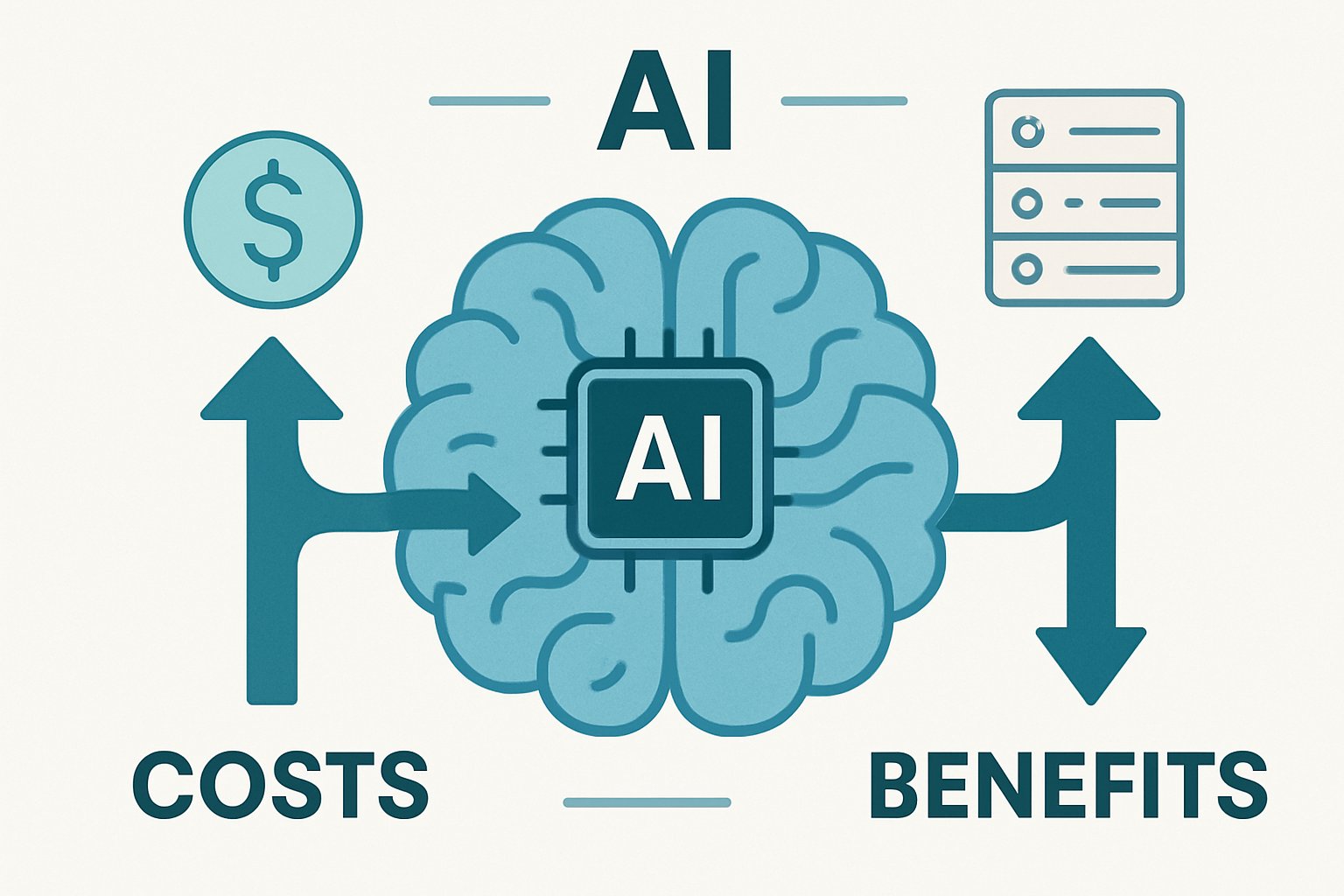
AI CERTS
12 hours ago
Palantir’s Warning: Optimizing AI Cost-to-Value Ratio at Scale
This article unpacks the numbers, risks, and mitigation tactics. Moreover, readers gain actionable insights for balancing innovation and prudence.
Scaling Costs Now Exposed
Palantir attributed its $1.18 billion quarter mainly to its Artificial Intelligence Platform. However, Karp warned that revenue growth masks swelling infrastructure bills. Training frontier models demands giant, episodic capital outlays. Nevertheless, inference becomes the ongoing financial drain once usage scales. New forecasts place global GPU data-center capex near $2 trillion by 2030. Additionally, power and cooling costs rise as utilization climbs. Enterprise AI spend often balloons when unexpected inference traffic hits production. Surveys confirm unpredictable bills rank among top deployment fears. Therefore, executives need a realistic AI ROI modeling framework early. Karp framed the challenge through the AI Cost-to-Value Ratio, urging discipline.

These figures illustrate the widening gap between revenue and resource consumption. Such tension demands rigorous financial scrutiny. Consequently, firms must examine payback math in detail.
AI Infrastructure Payback Math
Analysts liken current data-center frenzy to the dot-com fiber buildout. However, depreciation schedules stretch over three to five years while models refresh faster. Bain research suggests some AI factories require decade-long breakeven periods. Additionally, idle GPUs quickly erode returns if demand plateaus. AI ROI modeling scenarios show utilization swings alter profitability thresholds dramatically. In contrast, cloud consumption models shift capex toward variable costs, yet premium margins remain. Enterprise AI spend therefore hinges on predictable volume commitments. A proposed Levelized Cost of AI metric offers one comparative lens. It divides total lifetime costs by useful inference units. Consequently, executives calculate an internal AI Cost-to-Value Ratio for each workload.
- GPU depreciation: three years average
- Power escalation: 18% yearly in some regions
- Idle capacity penalty: up to 45% margin hit
Payback windows extend longer than many finance teams expect. Nevertheless, structured metrics can reveal viable investment zones. Subsequently, leaders must uncover operating drags that skew projections.
Hidden Operating Cost Drains
Infrastructure outlays represent only the visible tip of expense. Data cleansing, integration, and governance silently expand budgets. Moreover, shadow AI usage exposes new compliance and leakage risks. Detecting and routing these calls adds monitoring overhead. Training staff on responsible prompts also consumes unplanned hours. Enterprise AI spend spikes when teams chase last-mile fine-tuning experiments. Additionally, power costs fluctuate with regional energy markets. Palantir argues its platform mitigates many drags through secure orchestration. However, CIOs still need granular dashboards for live cost control. They frequently benchmark every workflow's AI Cost-to-Value Ratio to trigger throttles.
Hidden drains often dwarf headline GPU invoices. Therefore, continuous governance remains critical after launch. Meanwhile, better modeling practices can sharpen those governance decisions.
Modeling AI Value Accurately
Accurate valuation begins with detailed hypothesis trees for revenue or savings. Moreover, teams should align metrics with corporate strategic KPIs. AI ROI modeling tools now integrate real-time inference telemetry. These platforms feed finance systems with per-token cost snapshots. Consequently, rolling forecasts update each quarter without manual spreadsheets. Scenario libraries test adverse load spikes or hardware price shocks. In contrast, static TCO calculators miss dynamic utilization patterns. Each scenario outputs an updated AI Cost-to-Value Ratio for executives. Enterprise AI spend then maps directly to measurable business drivers.
Live models turn abstract risks into tangible dashboards. Nevertheless, dashboards alone cannot enforce action. As a result, companies explore strategic levers for cost discipline.
Strategic Cost Mitigation Paths
Several levers can compress ongoing costs without throttling innovation. Hybrid hosting shifts stable workloads on-prem while bursting uncertain traffic to cloud. Moreover, model distillation reduces parameter counts and inference compute. Rightsizing precision also trims memory footprints. Negotiating reserved GPU capacity lowers unit rates during peak quarters. Additionally, multi-tenant scheduling boosts hardware utilization. Professionals can enhance their expertise with the AI+ Government™ certification. Such training helps leaders navigate procurement with confidence. Each tactic aims to improve the AI Cost-to-Value Ratio across portfolios.
- GPU reservation discounts: up to 30% savings
- Model pruning: 40% lower inference latency
- Edge caching: 25% network cost reduction
Consequently, savings compound across thousands of daily calls. Practical levers exist for rapid efficiency gains. However, governance and policy frameworks must reinforce them. Therefore, the next section addresses policy roles.
Policy And Governance Pressures
National security concerns shape enterprise AI decisions, especially in regulated sectors. Karp linked cost discipline with strategic deterrence against adversaries. Moreover, governments increasingly demand transparent spending audits. The AI+ Government™ credential highlights compliance expertise for procurement officers. Additionally, standardized reporting templates now request an explicit AI Cost-to-Value Ratio. Such disclosure enables cross-agency benchmarking and budget oversight. Nevertheless, balancing transparency with proprietary model details remains difficult. Consequently, public-private task forces propose shared LCOAI reference calculators.
Policy pressure amplifies the need for verifiable economics. In contrast, vague estimates risk funding cuts. Subsequently, concluding insights distill actionable next steps.
Critical Final AI Takeaways
Scaling AI promises transformational impact yet demands sober math. This review traced capital, operating, and governance pressures. Furthermore, the AI Cost-to-Value Ratio emerged as the unifying decision metric. Accurate AI ROI modeling empowers leaders to test scenarios quickly. Meanwhile, visibility into enterprise AI spend prevents budget surprises. Practical levers—from pruning to hybrid hosting—shrink recurring bills. Additionally, certifications such as the AI+ Government™ program strengthen oversight skills. Consequently, teams can innovate confidently while satisfying auditors and boards. Explore our in-depth guides and certification resources to master cost-aware AI strategy today.



